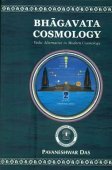Ilavritavarsha, Ilavrita-varsha, Ilāvṛtavarṣa, Ilavrita-Varsha: 5 definitions
Introduction:
Ilavritavarsha means something in Hinduism, Sanskrit. If you want to know the exact meaning, history, etymology or English translation of this term then check out the descriptions on this page. Add your comment or reference to a book if you want to contribute to this summary article.
The Sanskrit term Ilāvṛtavarṣa can be transliterated into English as Ilavrtavarsa or Ilavritavarsha, using the IAST transliteration scheme (?).
In Hinduism
Vaishnavism (Vaishava dharma)
Source: VedaBase: Śrīmad BhāgavatamAmidst these divisions, or varṣas, is the varṣa named Ilāvṛta, which is situated in the middle of the whorl of the lotus. Within Ilāvṛta-varṣa is Sumeru Mountain, which is made of gold. Sumeru Mountain is like the pericarp of the lotuslike Bhū-maṇḍala planetary system. The mountain's height is the same as the width of Jambūdvīpa — or, in other words, 100,000 yojanas [800,000 miles]. Of that, 16,000 yojanas [128,000 miles] are within the earth, and therefore the mountain's height above the earth is 84,000 yojanas [672,000 miles]. The mountain's width is 32,000 yojanas [256,000 miles] at its summit and 16,000 yojanas at its base.
Source: ISKCON Press: GlossaryIlāvṛtavarṣa (इलावृतवर्ष).—The original name of this earth planet, before it became known as Bharata-varṣa.
Source: Pure Bhakti: Brhad BhagavatamrtamIlāvṛtavarṣa (इलावृतवर्ष) refers to:—The central portion, or nucleus, of the galaxy; where Śrī Śiva meditates; location of Mount Meru. (cf. Glossary page from Śrī Bṛhad-bhāgavatāmṛta).

Vaishnava (वैष्णव, vaiṣṇava) or vaishnavism (vaiṣṇavism) represents a tradition of Hinduism worshipping Vishnu as the supreme Lord. Similar to the Shaktism and Shaivism traditions, Vaishnavism also developed as an individual movement, famous for its exposition of the dashavatara (‘ten avatars of Vishnu’).
Purana and Itihasa (epic history)
Source: archive.org: Puranic EncyclopediaIlāvṛtavarṣa (इलावृतवर्ष).—That part of the country in the centre of Jambūdvīpa. (Mahābhārata Sabhā Parva, Chapter 28).
Source: Cologne Digital Sanskrit Dictionaries: The Purana IndexIlāvṛtavarṣa (इलावृतवर्ष).—The central continent of Jambūdvīpa. To its north are mountains Nīla, Śveta and Śṛngavān, (Supārśva, Viṣṇu-purāṇa) and to its south are Niṣadha, Hemakūṭa and Himalayas. To its east and west are Mālyavat and Gandhamādana. (Mandara, Viṣṇu-purāṇa). The abode of Śiva. He who enters this region would be turned into a woman by the curse of Pārvati. Here Śiva worships the Fourth form of Viṣṇu called Saṅkarṣṇa by praises.1 Ilāvṛta (s.v.) was its first king.2 Here there is no sun or moon; people eat wood apple fruits.3 After Ila who spent here the evening of his life; Bali performed yajñas here.4 Next to Harivarṣa;5 in shape like a bow and lotus coloured; people here eat of jaṃbū and live to 13,000 years.6 The middle varṣa of Jambudvīpam surrounding Meru in extent 9000 yojanas; appears like a ball of smokeless fire; on each of the two sides are three varṣas or continents;7 trees special to the region are kadamba, jambū, pippala, and vaṭa; lies between Bhadrāśva and Ketumāla; the forests are caitraratha, gandhamādana, vaibhrāja and nandana; there are besides four lakes.8
- 1) Bhāgavata-purāṇa V. 16. 7-10; 17. 15-24.
- 2) Brahmāṇḍa-purāṇa II. 14. 49; 15. 24, 33-37.
- 3) Ib. II. 17. 9-14, 22.
- 4) Matsya-purāṇa 113. 19 & 30; 114. 69; 135. 2.
- 5) Vāyu-purāṇa 34. 29.
- 6) Vāyu-purāṇa 46. 11-15.
- 7) Vāyu-purāṇa 34. 22.
- 8) Viṣṇu-purāṇa II. 2. 15-26.

The Purana (पुराण, purāṇas) refers to Sanskrit literature preserving ancient India’s vast cultural history, including historical legends, religious ceremonies, various arts and sciences. The eighteen mahapuranas total over 400,000 shlokas (metrical couplets) and date to at least several centuries BCE.
Kavya (poetry)
Source: Shodhganga: The Kavyamimamsa of RajasekharaIlāvrtavarṣa (इलाव्र्तवर्ष) is the name a locality mentioned in Rājaśekhara’s 10th-century Kāvyamīmāṃsā.—Itāvrtavarṣa region surrounding by the Mahāmeru or the Mountain situated in the middle of the Jambudvīpa. The Meru is said to have three varṣas in the north side and three in the south side, with Bhāratavarṣa being the third to the south.

Kavya (काव्य, kavya) refers to Sanskrit poetry, a popular ancient Indian tradition of literature. There have been many Sanskrit poets over the ages, hailing from ancient India and beyond. This topic includes mahakavya, or ‘epic poetry’ and natya, or ‘dramatic poetry’.
See also (Relevant definitions)
Partial matches: Varsha, Ilavrita.
Full-text: Gandhamadana, Jambudvipa, Bharatavarsha, Ilavrita, Ompatu.
Relevant text
Search found 15 books and stories containing Ilavritavarsha, Ilavrita-varsha, Ilavrita-varsha, Ilāvṛta-varṣa, Ilavrta-varsa, Ilāvṛtavarṣa, Ilavrtavarsa; (plurals include: Ilavritavarshas, varshas, varṣas, varsas, Ilāvṛtavarṣas, Ilavrtavarsas). You can also click to the full overview containing English textual excerpts. Below are direct links for the most relevant articles:
Yoga Vasistha [English], Volume 1-4 (by Vihari-Lala Mitra)
Chapter CCXI - Lecture on transcendent truth < [Book VII - Nirvana prakarana part 2 (nirvana prakarana)]
Garga Samhita (English) (by Danavir Goswami)
Verse 5.21.21 < [Chapter 21 - The Story of Śrī Nārada]
Chaitanya Bhagavata (by Bhumipati Dāsa)
Verse 1.1.20 < [Chapter 1 - Summary of Lord Gaura’s Pastimes]
The Brahma Purana (by G. P. Bhatt)
Brihad Bhagavatamrita (commentary) (by Śrī Śrīmad Bhaktivedānta Nārāyana Gosvāmī Mahārāja)
Verse 2.3.66 < [Chapter 3 - Bhajana (loving service)]
Verse 2.2.8-9 < [Chapter 2 - Jñāna (knowledge)]
Verse 2.4.155-157 < [Chapter 4 - Vaikuṇṭha (the spiritual world)]
The Matsya Purana (critical study) (by Kushal Kalita)
Part 1 - Bhūvanakoṣa: Geography of Seven Continents (saptadvīpā) < [Chapter 8 - Geographical data in the Matsyapurāṇa]
Related products
